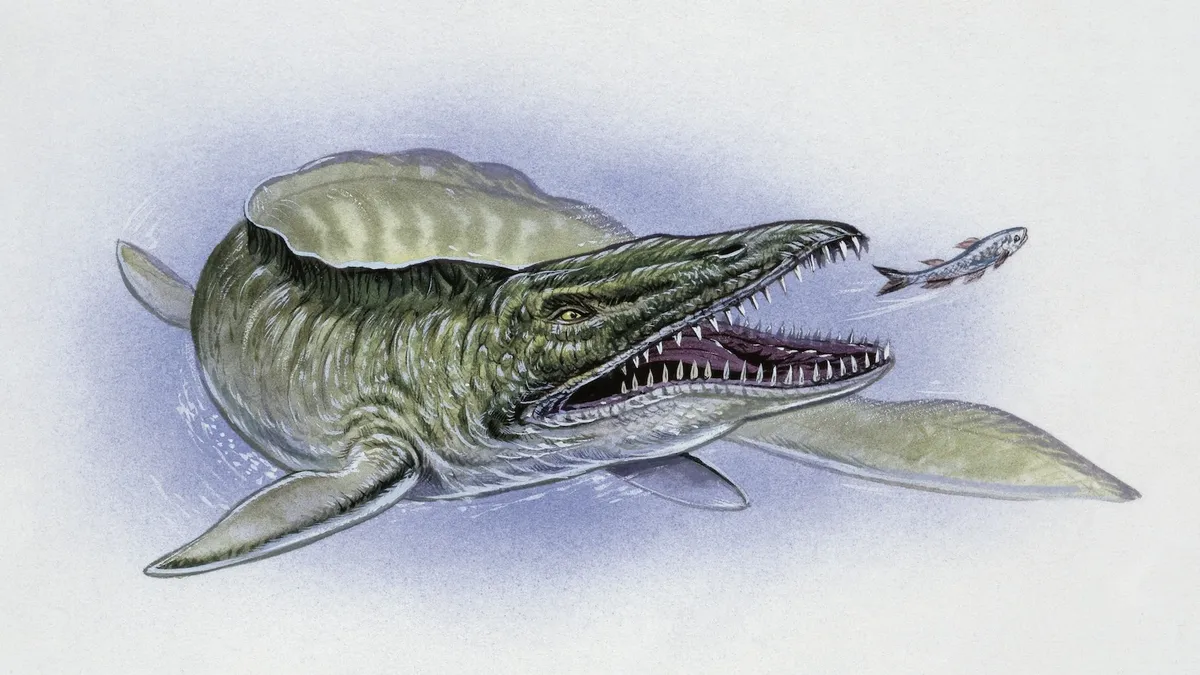
In a remarkable find, geologists in Mississippi have uncovered the fossil of an ancient marine apex predator, specifically a piece of vertebra believed to belong to a mosasaur. This extraordinary discovery was reported by James Starnes, the research director for the surface geology and surface mapping divisions at the Mississippi Department of Environmental Quality. The fossil was unearthed on April 15, during a routine collection of rock, sediment, and fossil samples just south of Starkville, Mississippi.
While examining the sediment of a creek bed, geologists discovered the end of an unusually large lumbar vertebra protruding from the clay. Starnes, who recognized the significance of the find, pointed it out to Jonathan Leard, the lead author of the MDEQ's geological map. "Both of us are standing there looking at each other with our jaws wide open because of the size," Starnes remarked, highlighting the jaw-dropping nature of the discovery.
Upon further examination, Starnes quickly identified the vertebra as belonging to a mosasaur, specifically the species Mosasaurus hoffmannii. Researchers estimate that this ancient marine predator measured between 30 to 40 feet in length when it perished. It is worth noting that adult mosasaurs typically reached lengths of about 50 feet and could weigh up to 20,000 pounds. Starnes explained that these marine reptiles, like other lizards, are indeterminate, meaning they continue to grow throughout their lives until death.
Mississippi is renowned for its rich geological formations, which makes it a prime location for fossil discoveries. However, Starnes emphasized that this particular find is exceptionally rare. While shell fossils and Ice Age fossils from land animals such as mastodons and sloths are common in the region, mosasaur fossils are not typically found in such large fragments. "This was distinctly not a mammal," Starnes said, confirming the unique shape of the vertebra, which clearly indicated it belonged to a marine lizard.
Mosasaurs, a diverse group of marine reptiles, dominated the oceans during the Late Cretaceous period, a time when dinosaurs roamed various terrestrial environments. The Mississippi River is situated on an ancient geological structure known as the Mississippi Embayment, which was submerged by the Western Interior Seaway during the Cretaceous period. Although mosasaur fossils have been found in the area previously, they were typically much smaller fragments. This newly found vertebra represents the largest mosasaur fossil encountered by the research team.
Researchers describe mosasaurs as agile and swift swimmers equipped with jaws that housed around 60 dagger-like teeth, enabling them to capture large prey effectively. Unfortunately, scientists believe that mosasaurs faced extinction at the end of the Cretaceous period, marking the conclusion of their reign as apex predators in ancient marine ecosystems.
This exciting discovery not only adds to our understanding of Mississippi's fossil record but also highlights the importance of ongoing geological research in uncovering the mysteries of the past. As scientists continue to explore the region, there is hope for more significant findings that could further illuminate the lives of these ancient marine creatures.